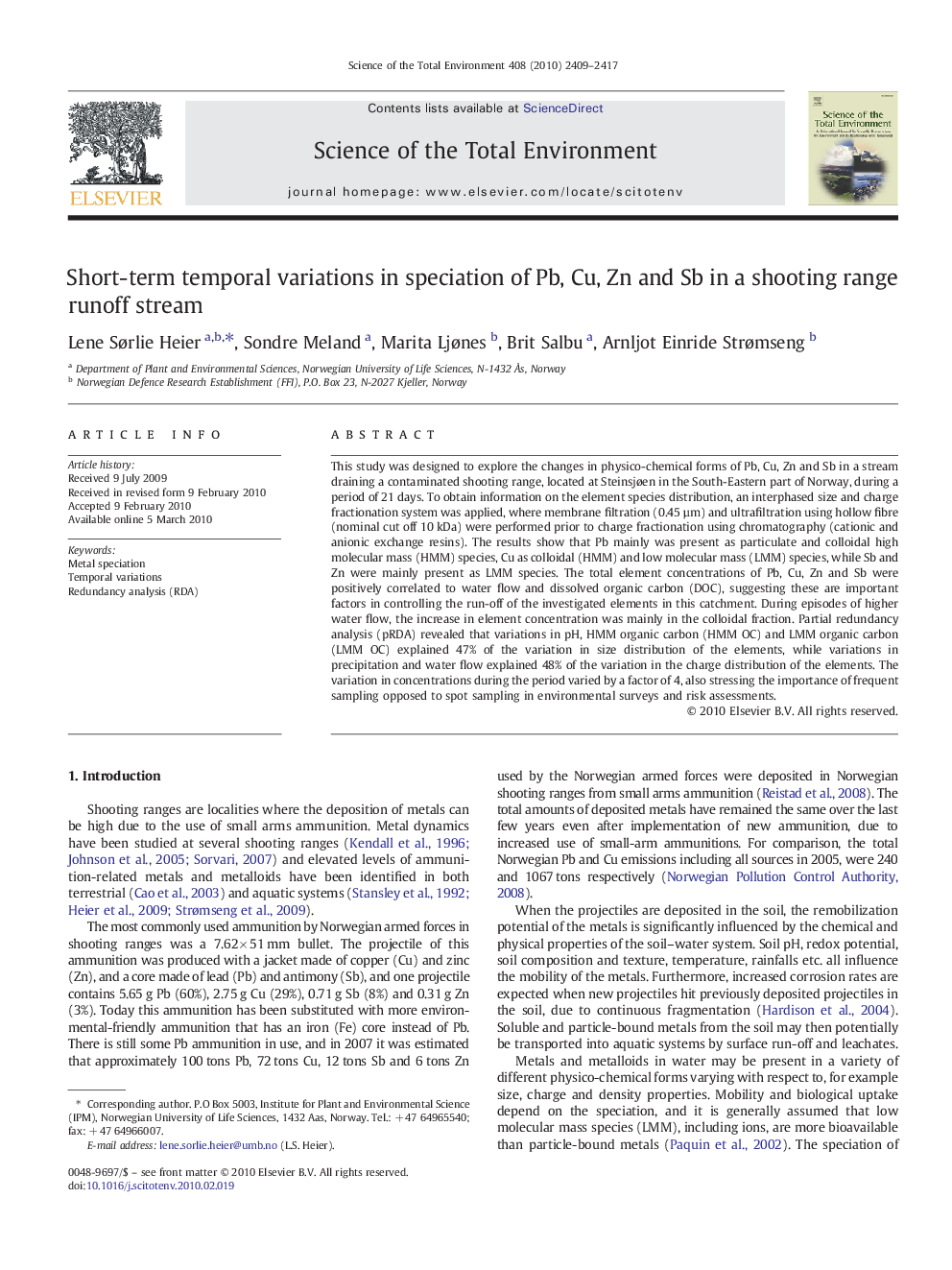| Article ID | Journal | Published Year | Pages | File Type |
|---|---|---|---|---|
| 4431328 | Science of The Total Environment | 2010 | 9 Pages |
This study was designed to explore the changes in physico-chemical forms of Pb, Cu, Zn and Sb in a stream draining a contaminated shooting range, located at Steinsjøen in the South-Eastern part of Norway, during a period of 21 days. To obtain information on the element species distribution, an interphased size and charge fractionation system was applied, where membrane filtration (0.45 µm) and ultrafiltration using hollow fibre (nominal cut off 10 kDa) were performed prior to charge fractionation using chromatography (cationic and anionic exchange resins). The results show that Pb mainly was present as particulate and colloidal high molecular mass (HMM) species, Cu as colloidal (HMM) and low molecular mass (LMM) species, while Sb and Zn were mainly present as LMM species. The total element concentrations of Pb, Cu, Zn and Sb were positively correlated to water flow and dissolved organic carbon (DOC), suggesting these are important factors in controlling the run-off of the investigated elements in this catchment. During episodes of higher water flow, the increase in element concentration was mainly in the colloidal fraction. Partial redundancy analysis (pRDA) revealed that variations in pH, HMM organic carbon (HMM OC) and LMM organic carbon (LMM OC) explained 47% of the variation in size distribution of the elements, while variations in precipitation and water flow explained 48% of the variation in the charge distribution of the elements. The variation in concentrations during the period varied by a factor of 4, also stressing the importance of frequent sampling opposed to spot sampling in environmental surveys and risk assessments.
